Conflict Zones
Amid conflict, why does the DRC want a minerals deal with Trump? | Armed Groups News
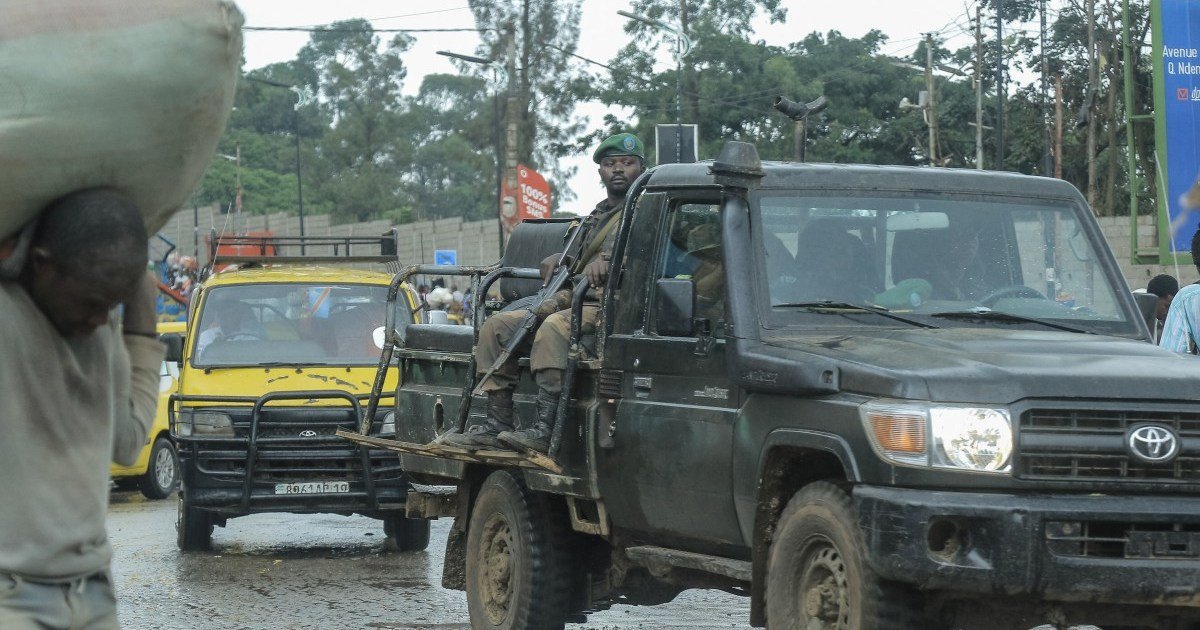
The Democratic Republic of the Congo (DRC) is having “daily exchanges” with the United States government with the aim of securing a minerals-for-security deal, Congolese officials have told the media.
The move comes amid escalating violence in the East African country. The rebel M23 armed group has seized territory in areas rich in gold and coltan, an important mineral used in the manufacturing of electronic gadgets.
At least 7,000 people have been killed since January, according to the DRC government. Thousands more have been displaced.
Although there are no details of an official proposal for a deal with the US, DRC legislators appear to be hoping that the US will deploy troops to help contain the conflict in exchange for rights to the minerals. Analysts, however, say it is unclear whether such an alliance would align with US President Donald Trump’s “America First” policy, and that Washington would be more likely to take a less hands-on approach under any deal.
“The most likely scenario of such an agreement would be the US’s provision of military equipment to the DRC as opposed to any direct troop support,” Daniel van Dalen, senior analyst at South Africa-based security intelligence firm, Signal Risk, told Al Jazeera.
Here’s what we know so far about the DRC’s proposal:

Why is DRC seeking a minerals deal with the US now?
Observers say the DRC has been inspired by Washington’s proposal to support Ukraine in its war against Russia in exchange for a minerals deal.
That proposal entails Kyiv handing over a 50 percent stake in the country’s minerals revenue to enjoy a “long-term financial commitment to the development of a stable and economically prosperous Ukraine” from the US.
According to the Reuters news agency, Andre Wameso, deputy chief of staff to DRC’s President Felix Tshisekedi, went to Washington earlier this month to discuss a similar potential “partnership” with US officials. DRC officials have not disclosed specific details on what such a deal would entail.
Like Ukraine, the DRC needs security partners to win its war against the M23 and more than 100 other armed groups that have control of lucrative mines throughout the country. The resource-rich country is a major producer of tin, tungsten, tantalum and gold. These minerals, known collectively as 3TG, are used in the production of electronics, defence equipment, electric vehicles and other technology. DRC’s untapped natural resources are estimated to be worth some $24 trillion.

What has been proposed by Congolese legislators?
On February 21, the Africa Business Council, an international advocacy group for African business interests, wrote to US Secretary of State Marco Rubio, inviting the US to invest in DRC’s untapped resources. The group said it was acting on behalf of Congolese senator Pierre Kanda Kalambayi who chairs the DRC’s senate committee on defence, security and border protection.
The group suggested access to such investment could be made in exchange for “a long-term economic and security partnership that benefits both nations”.
In its proposal, the Africa Business Council proposed:
Access to DRC’s mines for US defence and technology companies and access to a port for exports.
Control of a joint mineral stockpile of Congolese minerals to be shared by the two countries.
In exchange, the US would provide training and equipment for Congolese forces and direct access to the US military in DRC.
US officials last week signalled a readiness to consider such proposals, but did not respond directly.
“The United States is open to discussing partnerships in this sector that are aligned with the Trump Administration’s America First Agenda,” a US State Department spokesperson told Reuters, noting that Congo held “a significant share of the world’s critical minerals required for advanced technologies”.
The spokesperson added that the US would want to boost private sector investment in the DRC “in a responsible and transparent manner”.
What is the armed conflict in DRC about?
A protracted conflict has raged in the DRC for more than 30 years. The country’s armed forces are weak as a result of government corruption, according to analysts. The country has endured two civil wars between 1996 and 2002, as well as the current rebellion of the M23, with many thousands killed. Millions of people have been displaced.
Defeating the M23 armed group is President Felix Tshisekedi’s top priority. Although several peacekeeping forces are currently in the country, including a United Nations mission (MONUSCO), M23 has managed to seize at least two major towns – Goma and Bukavu – in a lightning advance. It is presently closing in on a third – Walikale, a major mining hub.
A dispute with neighbouring Rwanda adds a further dimension to the conflict. The UN and US have both separately accused Rwanda of backing the M23 and supplying it with troops. They also allege the M23 group is smuggling gold, coltan and other minerals out of the DRC.
Rwanda’s President Paul Kagame denies any involvement with M23 but has in the past justified sending Rwandan soldiers to the DRC to protect Congolese Tutsis from alleged discrimination. That minority population fled Rwanda in 1994 in the wake of a genocide carried out by members of the Hutu majority.
Rwanda has also accused DRC of harbouring Hutu armed groups involved in the genocide. During the Congolese civil wars, UN reports concluded that both Rwanda and its ally, Uganda, had looted the DRC’s mineral resources.
Analysts fear that scenario is playing out again, this time via the M23’s control of lucrative mines in eastern DRC. The European Union, which signed a deal with Rwanda to supply 3TG minerals in February 2024, is now considering cancelling that contract. Rwanda currently supplies about 30 percent of the world’s tantalum. The EU has similar agreements with the DRC.
Several European countries, and the US, have in recent weeks imposed sanctions on key Rwandan officials they say are linked to the current violence in eastern DRC, and have called on Kagame’s government to withdraw troops.
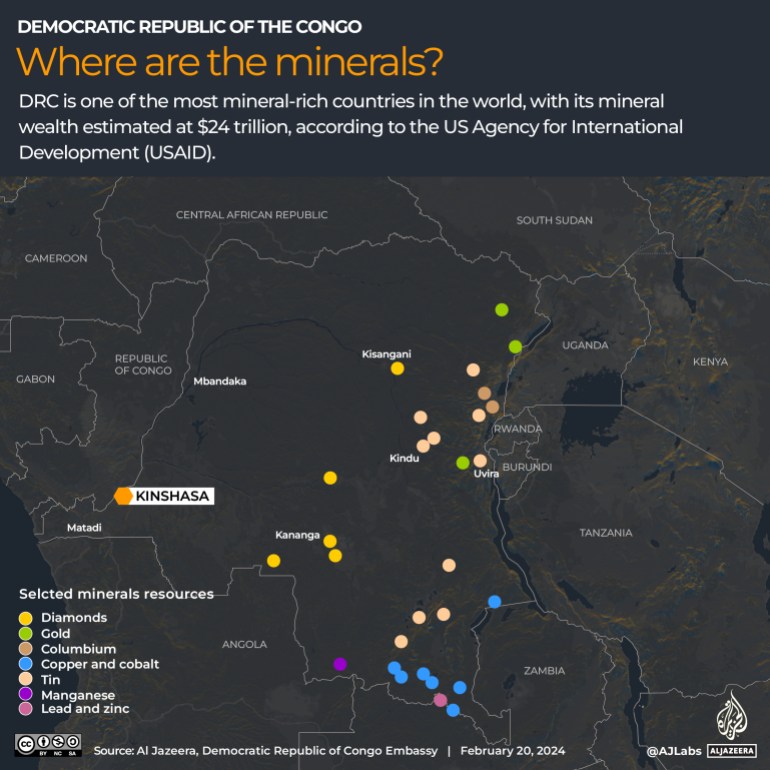
How would the US benefit from a deal with DRC?
Analysts say Washington could benefit from direct access to DRC-government-owned minerals.
Former DRC President Joseph Kabila negotiated several minerals-for-infrastructure deals with China, although those have been criticised for not being transparent and for failing to deliver what was promised. Currently, Chinese companies dominate the investment landscape in DRC’s minerals industry. Nine of the biggest cobalt mining regions are in the DRC’s southern Katanga. Of the mines in those regions, half are run by Chinese operators.
Under President Tshisekedi, the DRC government appears ready to shift away from China and invite other players to own and operate mines. DRC has signed deals with the EU and India in the past two years. This week, DRC spokesperson Patrick Muyaya told Reuters the country was ready to “diversify” and that the US, in particular, would be welcome.
“If today American investors are interested in coming to the DRC, obviously they will find space … DRC has reserves that are available and it would also be good if American capital could invest here,” he said.
However, analyst van Dalen said it is unlikely that the US would seek to own mines in the DRC, as Congolese politicians have proposed, because this would mean Washington would “only be playing catch-up” with China.
“I don’t foresee a scenario where any agreement materially alters the domestic security landscape in the near term or China’s dominance in the sector,” he said.
A more likely scenario, he added, would see the US buying directly from the government, while its rival, China, continues to operate mines. That approach would also prevent any potential US-China “face-offs” on the ground.
What will happen next?
The two countries were already fostering a growing relationship under former President Joe Biden’s administration but it’s unclear if or when the DRC and the US would sign any deals.
Although there are no US companies operating in the country, the US is investing in the Lobito Corridor, an infrastructure project which includes the building of railways and ports to export DRC’s minerals through neighbouring Angola.
Under Trump, that relationship is set to become more transactional, analysts say, as the Ukraine negotiations have demonstrated.
However, experts also say it remains unclear how new US military equipment for the DRC would immediately change the course of the ongoing war, as the M23 continues its advance towards Kinshasa.
Such support would more likely bolster the DRC’s efforts to reform its weak military in the medium to long term, experts say.
Conflict Zones
Ballet helps fight war fatigue in Ukraine’s front-line Kharkiv city | Russia-Ukraine war

In the Ukrainian city of Kharkiv, escaping the war with Russia is nearly impossible.
On certain days, when the wind shifts, residents of this historic city can hear the distant rumble of artillery fire from the front line, some 30km (18.5 miles) away.
Most nights, Russian kamikaze drones packed with explosives buzz overhead as parents put their children to bed.
Three years since Russia’s invasion of Ukraine, the unrelenting war exerts a heavy psychological burden on many in Kharkiv. Yet, there is a place in the city where, for a few fleeting hours, the war seems to vanish.
Beneath the Kharkiv National Academic Opera and Ballet Theatre, in a dim, brick-walled basement, a dance company has established a refuge from drones and bombs – a space where audiences can lose themselves in performances of classic ballets.
In April, this underground venue hosted performances of Chopiniana, an early 20th-century ballet set to the music of Frederic Chopin. Despite the improvised setting, the ballet was staged with full classical grandeur, complete with corps de ballet and orchestra.

It marked a significant milestone for Kharkiv’s cultural life: the first complete classical ballet performance in the city since February 2022, when Russian troops launched their invasion of Ukraine.
“In spite of everything – the fact that bombs are flying, drones, and everything else – we can give a gift of something wonderful to people,” said Antonina Radiievska, artistic director of Opera East, the ballet company behind the production.
“They can come and, even if it’s just for an hour or two, completely immerse themselves in a different world.”
Despite Ukraine’s rich tradition in classical ballet, the art form now seems far removed from the everyday existence of Ukrainians living through war. Daily routines revolve around monitoring apps for drone alerts, sleeping on metro station floors to escape air raids, or seeking news of loved ones on the front line. Pirouettes, pas de deux and chiffon tutus feel worlds away.
Nevertheless, the journey of Kharkiv’s ballet through wartime reflects the ways in which Ukrainian society has adapted and evolved.
On February 23, 2022, the National Academic Opera and Ballet Theatre staged a performance of the ballet Giselle. The next day, Russia launched its full-scale invasion. As Moscow’s forces advanced towards Kharkiv and threatened to seize the city, the theatre closed its doors and much of the ballet troupe departed.
Some regrouped in Slovakia and Lithuania, mounting ballet productions abroad with assistance from European sponsors.

By 2023, although the conflict ground on, the situation in Kharkiv, in Ukraine’s northeast, had stabilised after Russian ground troops withdrew. A new realisation took hold – this was a long-term reality. Locals began referring to the city, and themselves, with the Ukrainian word “nezlamniy”, meaning invincible.
That year, work began on transforming the theatre’s basement into a performance venue. By October 2023, it was being used for rehearsals. The following spring, authorities permitted the theatre to admit audiences, and small-scale ballet performances, including children’s concerts, resumed.
The revival of Chopiniana marked the next chapter in Kharkiv’s wartime cultural journey.
Staging a classical opera again signals that Ukraine endures, says Igor Tuluzov, director-general of Opera East. “We are demonstrating to the world that we really are a self-sufficient state, independent, in all its aspects, including cultural independence,” he said.
The auditorium now seats 400 people on stackable chairs, compared with the 1,750 seats in the main theatre above, where the plush mustard seats remain empty.
The stage is a quarter the size of the main one. Grey-painted bricks, concrete floors, and exposed pipes and wiring form a stark contrast to the varnished hardwood and marble of the theatre above. The basement’s acoustics, performers say, fall short of the cavernous main auditorium.
For artistic director Radiievska, however, the most important thing is that, after a long pause, she and her troupe can once again perform for a live audience.
“It means, you know, life,” she said. “An artist cannot exist without the stage, without creativity, without dance or song. It’s like a rebirth.”
Conflict Zones
Sudan Paramilitary Claims Key Gains in Kordofan; Fighting Intensifies Near Khartoum

Khartoum, May 30, 2025 — Rapid Support Forces (RSF) deputy leader Abdel Rahim Daglo announced on Friday that RSF fighters would press their eastward advance toward Khartoum, claiming “great victories” in several strategic towns across Kordofan. Addressing troops at an undisclosed location, Daglo said that all armed groups within the Tasis coalition had joined his paramilitary ranks and were now operating in concert with the RSF.
According to Daglo, RSF units seized control of Al-Dubaibat and Al-Hammadi in South Kordofan state, as well as Al-Khawi in neighboring West Kordofan. “Our fighters have secured these areas after intense clashes with Sudanese Armed Forces (SAF) units and allied militias,” Daglo declared, adding that the momentum would not wane until the capital was within reach.
Sudan’s army, however, downplayed recent RSF advances as part of a “reorganization” campaign. A senior ally of the SAF—also the governor of Darfur—insisted that the military was regrouping and fortified its positions to counter what he described as “a temporary setback.” He maintained that the SAF’s strategic reserves remained intact and that front-line forces were being repositioned to mount a sustained defense of Khartoum.
As fighting has spread northward, the humanitarian situation in Khartoum has deteriorated sharply. With basic services all but collapsed, a deadly cholera outbreak has emerged in the densely populated capital. Aid agencies warn that the impending rainy season could exacerbate sanitation challenges, fueling further disease transmission. The United Nations has labeled the crisis “the world’s worst humanitarian emergency,” citing over 25,000 confirmed deaths and more than 3 million internally displaced persons since April.
International pressure has also mounted on Sudan’s transitional government. In late May, Washington imposed sanctions on Sudanese military leaders for the “alleged use of chemical weapons” against civilians. In response, the government announced a national investigation into the claims—a move it said was aimed at preserving Sudan’s international standing amid intensifying conflict.
With both sides entrenching their positions around Khartoum, observers warn that a protracted stalemate could unleash further civilian suffering. The RSF’s pledge to advance eastward has raised concerns that front-line engagements may spill into densely populated suburbs, where millions have already endured weeks of intermittent shelling and aerial bombardments. For now, the fate of Khartoum—and the broader prospects for peace—remain uncertain as paramilitary and army forces brace for a decisive showdown.
Conflict Zones
Two killed in Russian attacks on Ukraine before possible talks in Turkiye | Russia-Ukraine war News
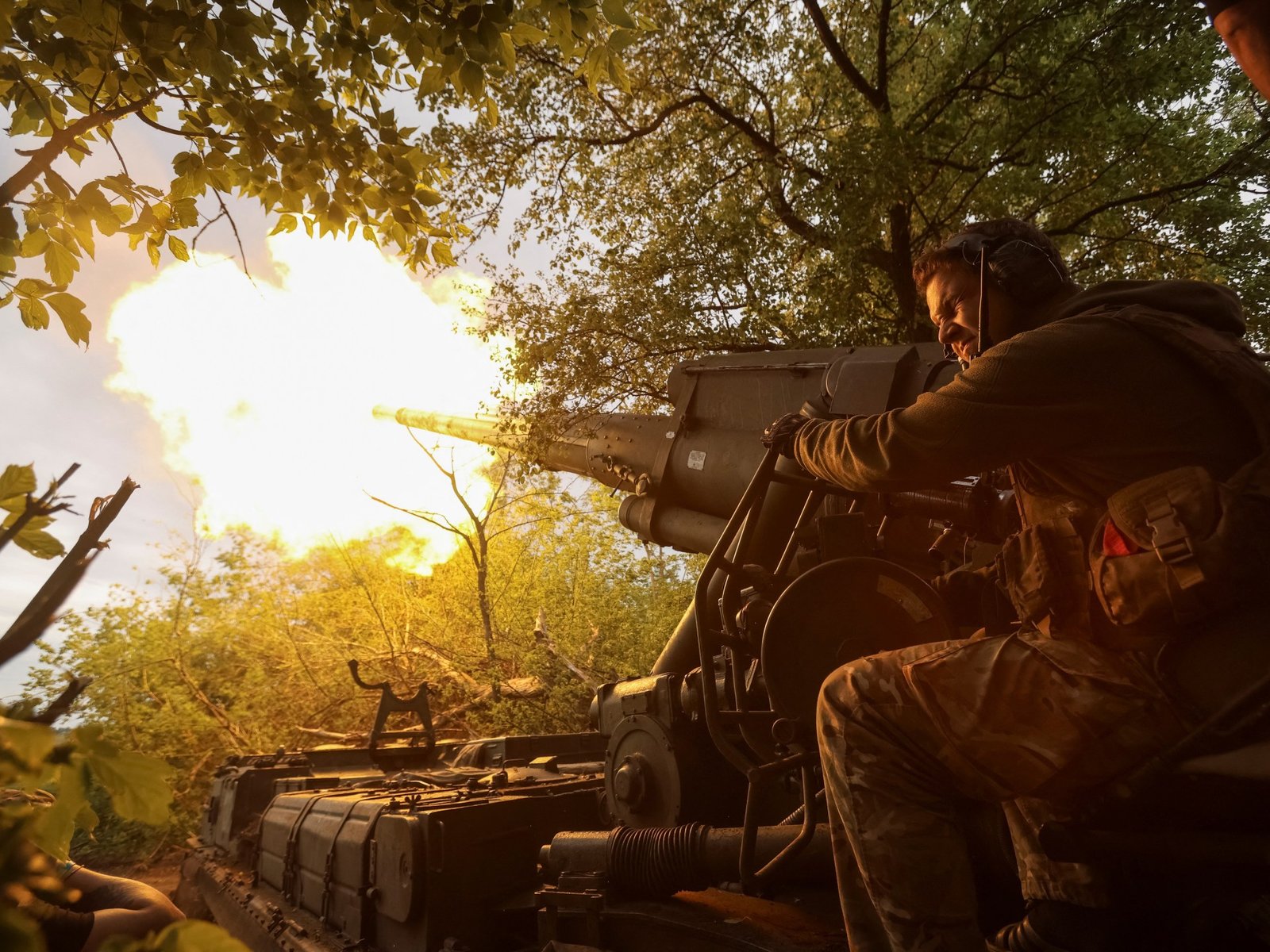
Russia has confirmed it will send a delegation to Istanbul, but Kyiv has not yet accepted the proposal.
Russian drone and missile attacks on Ukraine have killed at least two people, according to officials, as Ukraine ordered the evacuation of 11 more villages in its Sumy region bordering Russia.
Russian troops launched an estimated 109 drones and five missiles across Ukraine on Friday and overnight, the Ukrainian air force said on Saturday, adding that three of the missiles and 42 drones were destroyed and another 30 drones failed to reach their targets without causing damage.
The attacks came amid uncertainty over whether Kyiv will take part in a new round of peace talks early next week in Istanbul.
In the Russian attacks on Saturday, a child was killed in a strike on the front-line village of Dolynka in the Zaporizhia region, and another was injured, Zaporizhia’s Governor Ivan Fedorov said.
“One house was destroyed. The shockwave from the blast also damaged several other houses, cars, and outbuildings,” Fedorov wrote on Telegram.
A man was also killed by Russian shelling in Ukraine’s Kherson region, Governor Oleksandr Prokudin wrote on Telegram.
Moscow did not comment on either attack.
Meanwhile, authorities in Ukraine’s Sumy region said they were evacuating 11 villages within a roughly 30-kilometre (19-mile) range from the Russian border.
“The decision was made in view of the constant threat to civilian life as a result of shelling of border communities,” the regional administration said on social media.
Ukrainian President Volodymyr Zelenskyy has said some 50,000 Russian troops have amassed in the area with the intention of launching an offensive to carve out a buffer zone inside Ukrainian territory.
Ukraine’s top army chief, Oleksandr Syrskii, said on Saturday that Russian forces were focusing their main offensive efforts on Pokrovsk, Torets and Lyman in the Donetsk region, as well as the Sumy border area.
Syrskii added that Ukrainian forces are still holding territory in Russia’s Kursk region – a statement Moscow has repeatedly denied.
The evacuations and attacks came just two days before a possible meeting between Kyiv and Moscow in Istanbul, as Washington called on both countries to end the three-year war.
Russia has confirmed it will send a delegation, but Kyiv has not yet accepted the proposal, warning the talks would not yield results unless the Kremlin provided its peace terms in advance.
Zelenskyy said Saturday it was still not clear what Moscow was planning to achieve at the meeting and that so far, it did not “look very serious”.
-

 Africa4 days ago
Africa4 days agoSurvivor of Liverpool car ramming talks of shock and panic
-

 Sports3 days ago
Sports3 days agoThe Knicks are bringing hope and title dreams back to New York after years in the doldrums
-

 Lifestyle3 days ago
Lifestyle3 days agoChildren and careers: Talking to kids about what they want to be when they grow up
-

 Lifestyle4 days ago
Lifestyle4 days agoHow to decorate a patio, balcony or other small outdoor space
-

 Lifestyle4 days ago
Lifestyle4 days agoFaizan Zaki hopes to go from spelling bee runner-up to champ
-
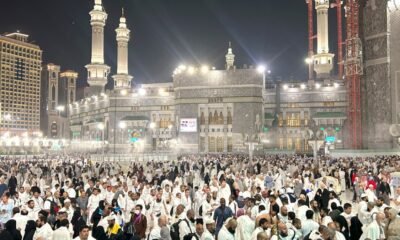
 Middle East5 days ago
Middle East5 days agoHajj pilgrimage in Saudi Arabia to begin on June 4 | Religion News
-
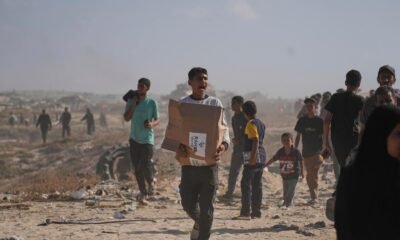
 Middle East4 days ago
Middle East4 days agoGaza’s aid system isn’t broken. It’s working exactly as designed | Humanitarian Crises
-
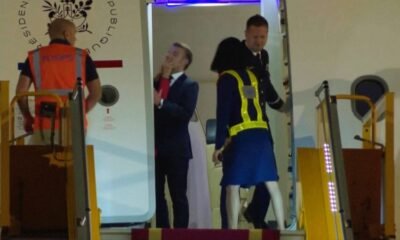
 Europe5 days ago
Europe5 days agoMacron’s marital shove disappears from French airwaves




